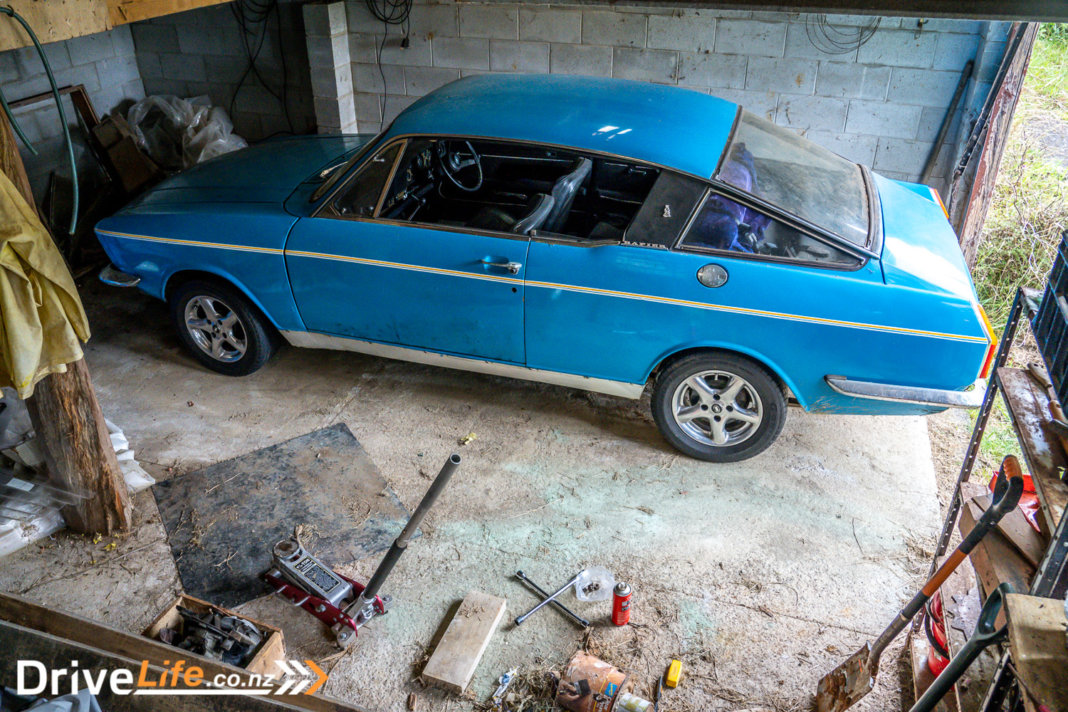At the end of Part 2 last month, we were sitting and waiting to head to Ahipara, up above 90 Mile Beach, to pick up our donor car – one that’s been sitting patiently in a garage for 20 years, in the middle of dense bush.
Okay, it’s not quite a barn find since it’s in a garage, and I have always known about it (since it’s my car), but it still feels like a barn find. Some people have asked about the history of this Fastback; When did I buy it, and why has it been just sitting there for a quarter of a century?
Back in the mid-1990s my wife and I were living in the Far North but often travelled to Wellington to see her folks. I got a call from a guy in Wellington who had this very Fastback for sale. We didn’t have a Sunbeam at the time and honestly didn’t have the money for looking at cars like this. We were starting out with a family and it seemed like an extravagance to have a car that wasn’t going to be used every day. Not only that, but we lived in the middle of the bush and so would have to store the car in Kaitaia somewhere, if we could find a place. Anyway, the previous owner of the Fastback asked me if I was looking for one, and naturally, I said yes but also mentioned we weren’t in the market for one. He suggested I take a look anyway, so we did. The car seemed straight overall, it had newish paint in a terrible blue colour but had great wheels and he had reconditioned the motor and gearbox.
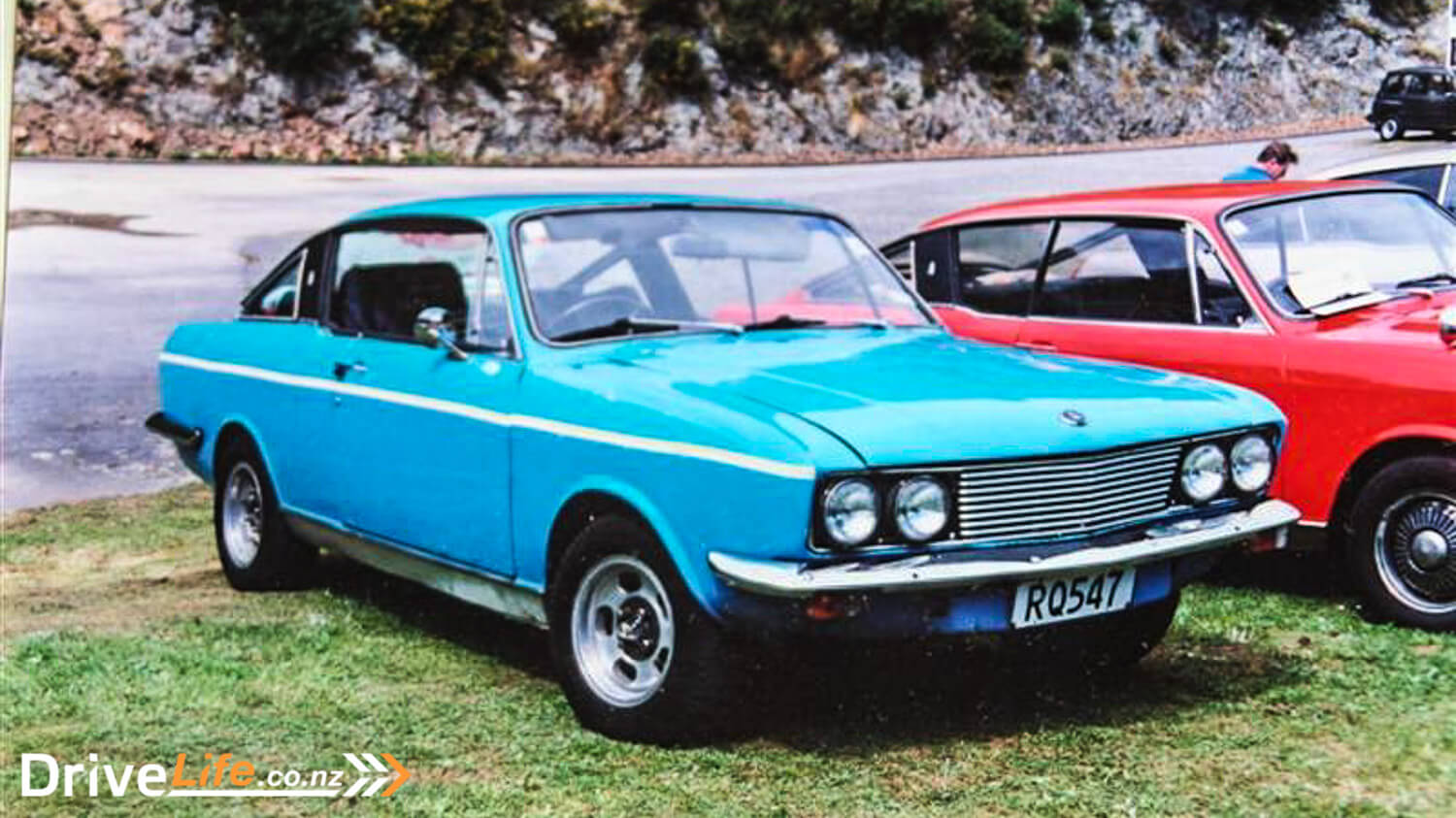
At one point he asked me if I liked the car, and again I said “yes”. As mentioned in Part 1, I had always liked the Fastback. So he gave me the keys, and said, “it’s yours.” I still remember that day holding the keys in confusion. He went on to say he didn’t want a teenager to buy it and wrap it around a power pole (as teenagers are wont to do) so so I should have it for free. As you can imagine, we were pretty blown away by his generosity.
So we stuck the Fastback on a train to Auckland and eventually got it back to Kaitaia, and spent years using it now and then (including a North Island tour with our two young kids). Then one day, we got stuck in and spent time and money on the 4km road to our house, and could get our Rapier Fastback actually to the house and into the garage. So we did, but from that point on, the road deteriorated to the point where we couldn’t drive it out again, the road had reverted back to 4-wheel drives only. And so it sat, and has done for two decades.
With just over a week to go before our road trip, the government made an announcement that the whole country was moving into a red traffic light mode, which caused a freak-out moment, and a few questions:
- Would we still be able to go and pick up the car?
- Since New Zealanders run red lights all the time, would anything change?
A quick check and thankfully we could fly and travel freely. Our road trip was still on.
While waiting for our flight, I made contact with Bruce Jamieson, an LVVTA Certifier. We want to use a certifier who can certify all the changes to the project car, that need certification. Some LVV Certifiers aren’t able to certify some modifications due to the LVV certification category that they hold, but thankfully Bruce has the correct categories to inspect all of the planned changes. We’ll use Bruce to check anything that needs certifying before we do it. That’s the only way to make sure that we aren’t modifying or altering the car that doesn’t align with New Zealand regulations.
Project V8 Sunbeam Rapier Fastback: Road Trip Time!
FRIDAY
After what felt like such a long time the day had finally arrived. With the tools we think we needed and could fit in a suitcase, we grabbed a flight from Wellington to Auckland and went straight to Ford to pick up a Ranger Wildtrak X as our tow vehicle. At the same time, a friend dropped off the temporary rims that I had bought (also mentioned in Part 2). We loaded these into the back of the Ranger, opening up the electric tonneau cover. I really thought having an electric cover was a bit of a gimmick and just a little overkill, but over the next 4 days, I’d really come to appreciate this feature. It makes life easier.
The Ranger was showing 738Km of range on its full tank, so ideally we’d only need two fill-ups to do our whole trip, which we are guessing would be 1,600Km over the next 4 days.
After picking up the wheels, it was a short drive back towards the airport to pick up our rental car-transporter trailer. We’re doing a one-way hire on the car-transporter trailer and found that Cross Country Rentals is the only company in New Zealand who do this.
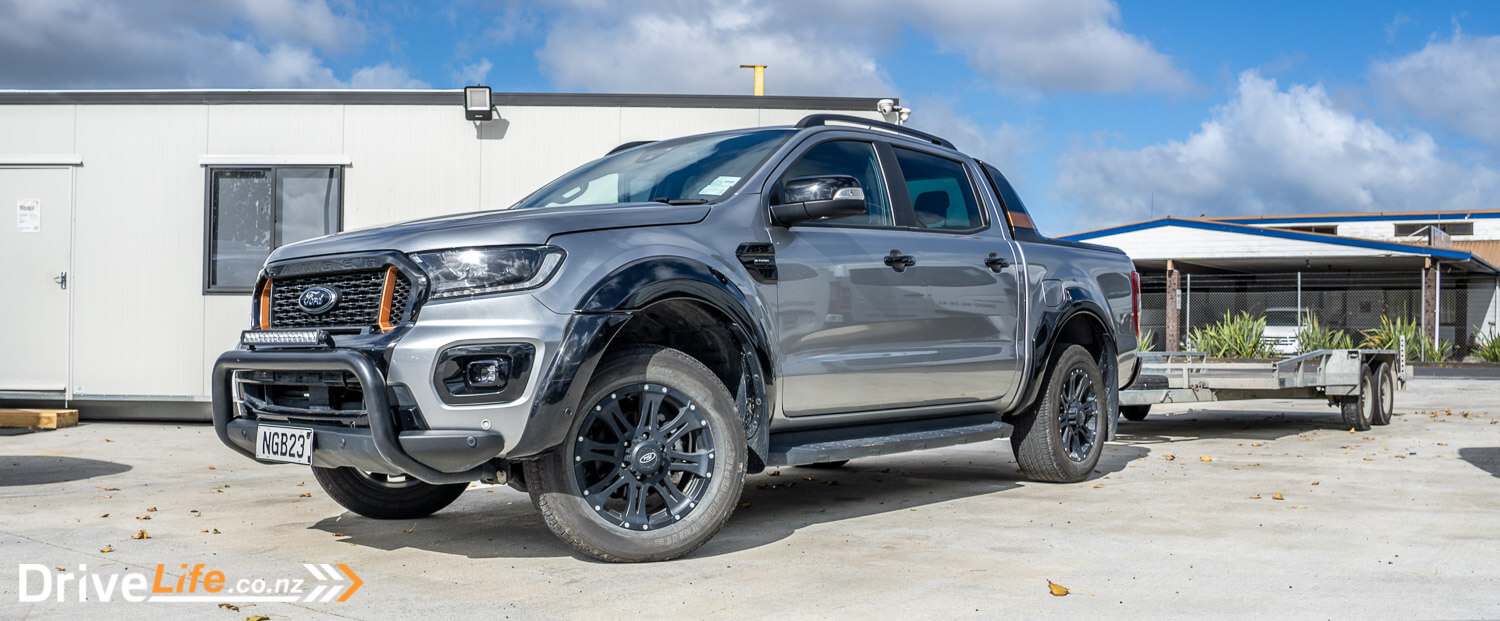
On hooking up to the Ranger, I took in the length and weight of the trailer. I wasn’t expecting it to be this long or weigh so much. Bronson at Cross Country Rentals tells me it weighs around 500Kg on its own, but I don’t mention where we’re going to take their trailer, high up into the bush above 90 Mile Beach, and offroad. With the Ranger running road tyres and the total weight of these two plus the Fastback on the trailer, we could only hope it didn’t rain.
Time to get this Road Trip started. We hit the road, heading firstly to Tutukaka, about 2.5 hours away. There we’d be picking up another helper, this one with trolley jacks and other tools we’d need but couldn’t bring on the plane.
This was my first time driving a Ranger with the 2-litre, twin-turbo motor and it already was impressing both of us. Supremely quiet on the motorway, and the trailer was barely affecting the performance or driveability of the car. The seats felt very comfy, but we’d reassess that after the next 1,600Km or so. My co-driver, Bruno, has spent many hours behind the wheel of a Ranger with the 3.2-litre 5-cylinder motor and 6-speed automatic gearbox towing, trailers all around the country. Once behind the wheel of the 2.0-litre, 4-cylinder twin-turbo Wildtrak X, he was also impressed. He claimed that the engine was far more responsive and the gearbox great. Once we have the car on the trailer, it might be a different story, however. I can only imagine the gearbox hunting up and down once we had a decent load on. Time will tell.
Our first mistake was talking too much on the motorway through the Waterview Tunnel and missing our turn towards the city. Albany it was, and it didn’t add too much time to the trip. At 100Km/h, the Ranger’s twin-turbo motor was turning over at just 1,500rpm, and it was so silent inside it was hard to believe this is a diesel truck.
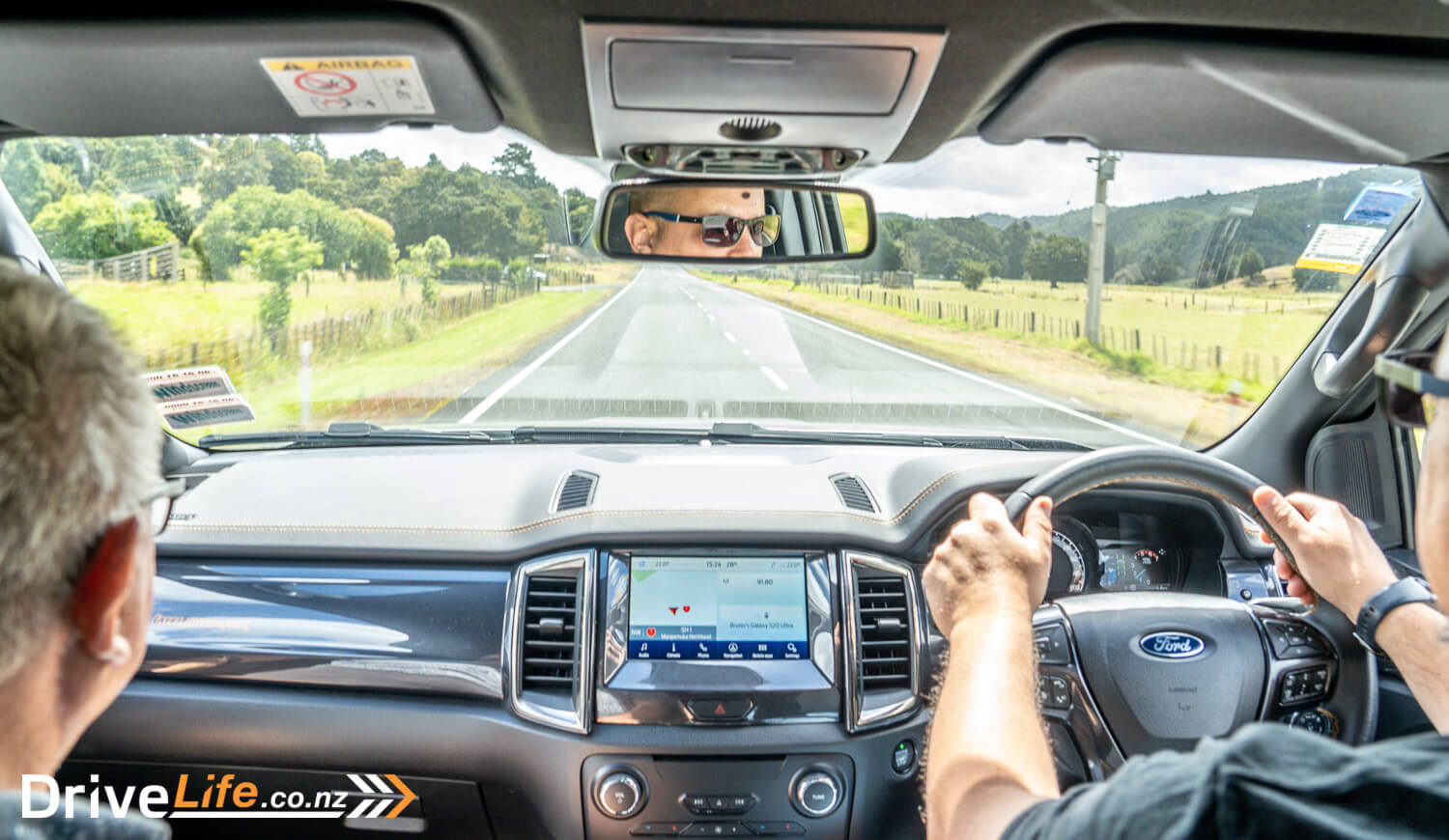
On picking up our passenger in Tutukaka, we cruised back toward SH1, and to the Far North. I’d allowed 6 hours to get from the trailer pickup to get to my house, giving us 2 hours to get the car on the trailer (all going well) and done by dusk. At this point, I got into the back of the Wildtrak to let Bruno drive. Since my laptop was flat after the flight to Auckland, it was great to see a 230-volt powerpoint in the back so I plugged my laptop in to charge up. Strangely, there’s no USB for your rear-seat passengers, but I was more than comfortable back there with ample leg and headroom, and it seems all the seats in the Wildtrak are extremely comfortable. I love that the side windows in the car are so big – this always helps with those who get car sick on long journeys.
We got to Kaitaia and headed west to Ahipara. Now the fun would begin, as we wound our way past that surfer’s paradise that is Shipwreck Bay, and on up the hill. I switched the car into 4H for the metal road, as this would help when the Ranger goes over the ruts on corners, and there were plenty. Surprisingly, the Ranger handled the road well, and the ride was almost smooth. I wasn’t expecting that, as while we had three passengers and some gear, we didn’t have a lot of weight in the tray – just my 4 rims/tyres and some tools. Up to this point, the Ranger had been using 10.1L/100Km of diesel, so it would be interesting to see how much more it used going offroad.
Twenty minutes later we got to my gate and switched the car into 4L to start the climb up the Big Hill. When I took a Mercedes-Benz GLE up this hill, the GLE told me it was a 31-degree hill, and it feels it. But even with on-road tyres and with a 500Kg trailer being dragged along, the Ranger simply ploughed up the hill with no drama. Impressive, yes, but let’s see what it’s like tomorrow coming down the hill with a car on the trailer. That will be a decent descent test.
After more hills and ruts we got near my house and then my garage. Getting the trailer close to the garage is going to be key, as the grassy driveway up the garage is pretty steep. We don’t want to lose the Fastback trying to get it on the trailer, as no doubt there will be no brakes at all. In a couple of goes, we got the trailer into position. I’m still a bit shocked at the Ranger’s capability here; with road tyres, I really thought we’d be having traction issues backing up a 500kg trailer up a steep slope on dirt/grass with sharp turns, but it nailed it.
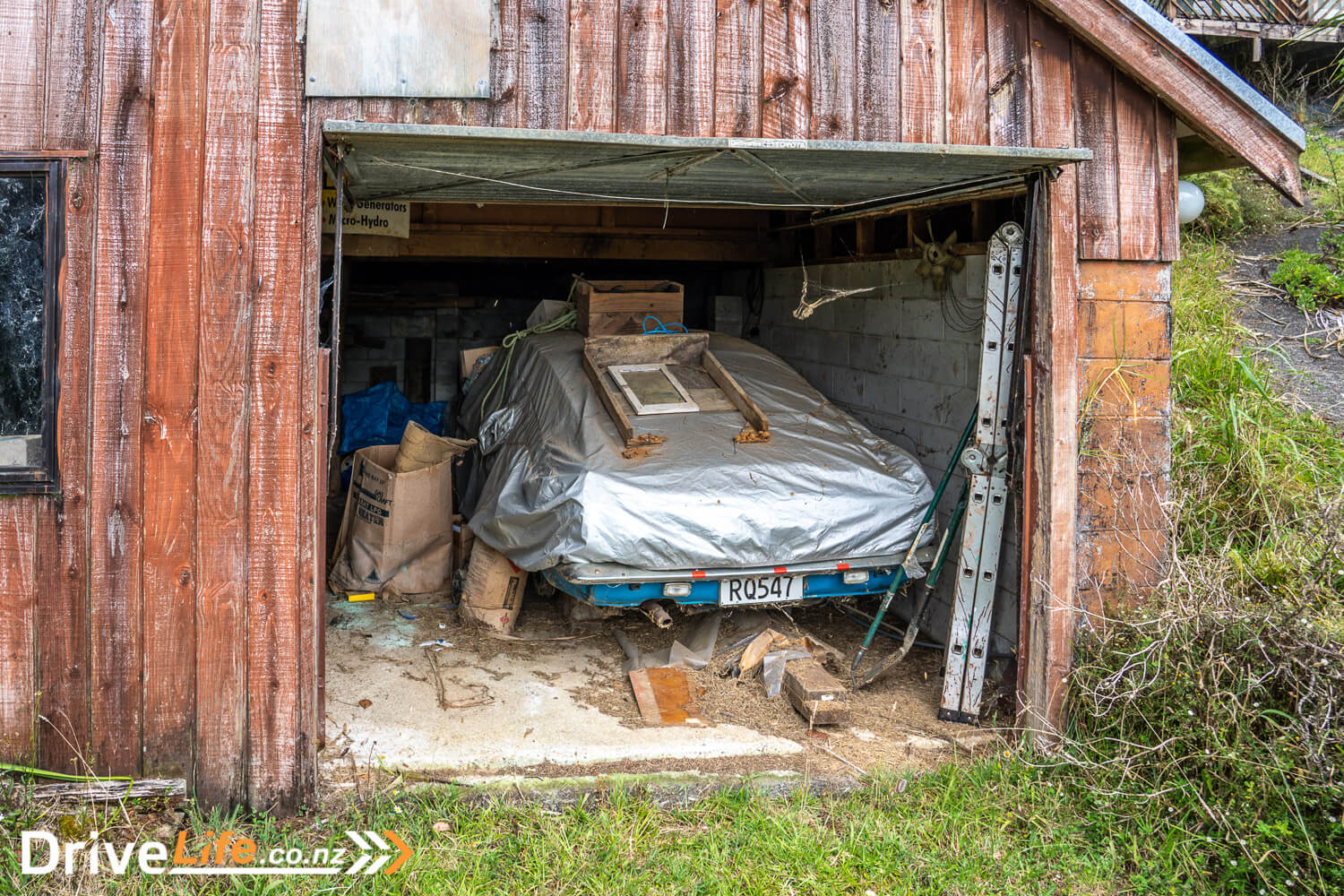
That done, we unlocked the garage and removed all the stuff I had piled on top of the car over the last 20 years. There was plenty. Now was the moment when we would take the cover off. Would it be covered in rust? Remember this car has not had that cover taken off in the last 20 years.
And that was it – cover off and it didn’t look too bad. There is some bubbling on the doors, above the windscreen and on the bonnet, but it could have been a whole lot worse. I did open the door to make sure there wasn’t a rat hotel running inside, but thankfully it was free of vermin. Still, we need to get the car on a hoist and poke underneath to see how rotten the floor is, and then there’s that great British invention – the sill covers – to remove and see what rust is hiding under those.
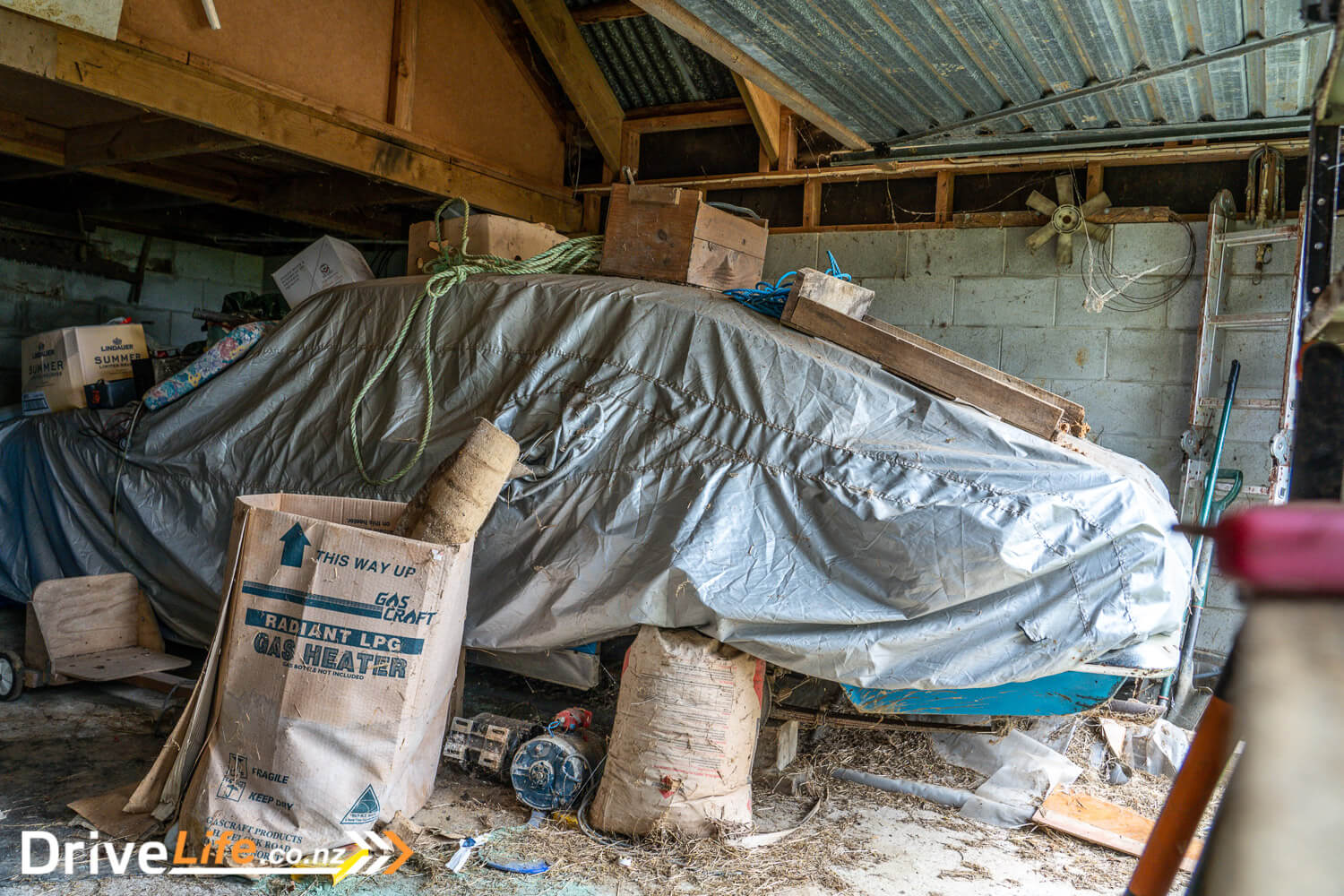
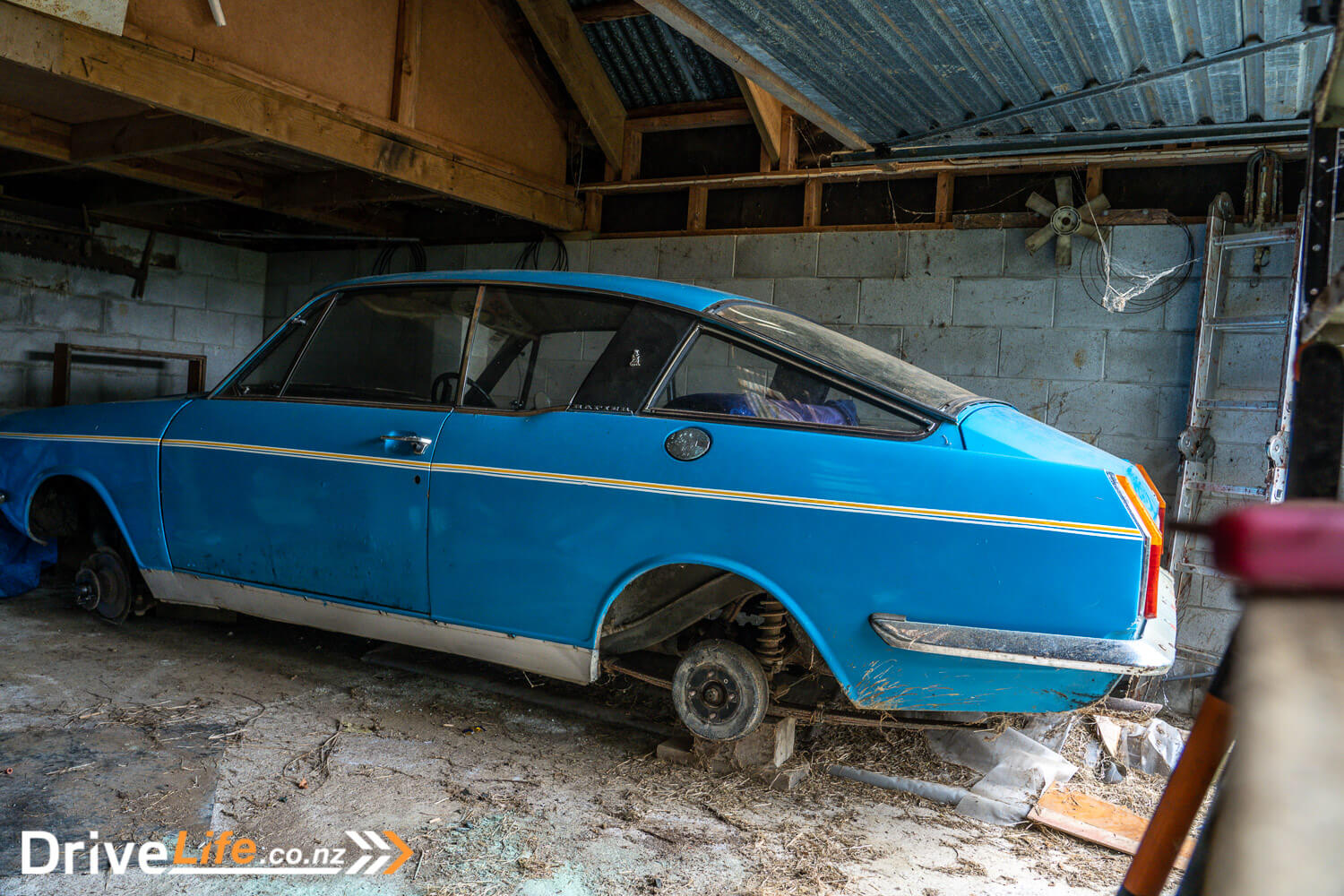
But that’s going to wait until Sunday or Monday. Right now we need to get the car on the trailer. We dragged out the old-school ROH alloys that I had bought for the car from the Wildtrak. They’re an Escort/Cortina stud pattern, but they should fit the Fastback. We got trolley jacks and wheel braces out, and thankfully the wheels are the right stud pattern and cleared all the brakes etc, so no need for the wheel spacers I had brought with me.
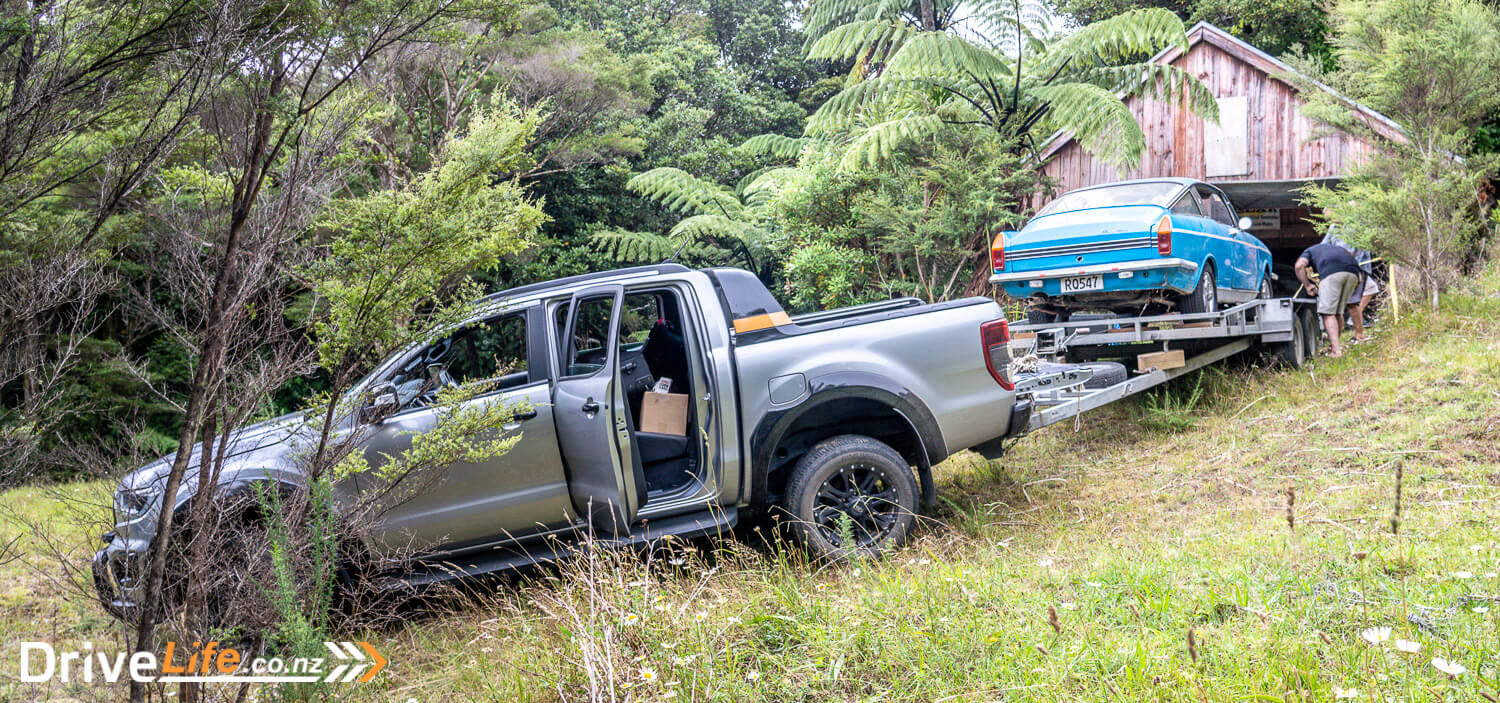
Of course, the brakes had seized on solid, but once off the jacks, we managed to rock the car enough to get it to move a little bit. That would be enough to winch it onto the trailer while someone held the car back with a belay line down from the garage. The last thing we want is the car to take off on us.
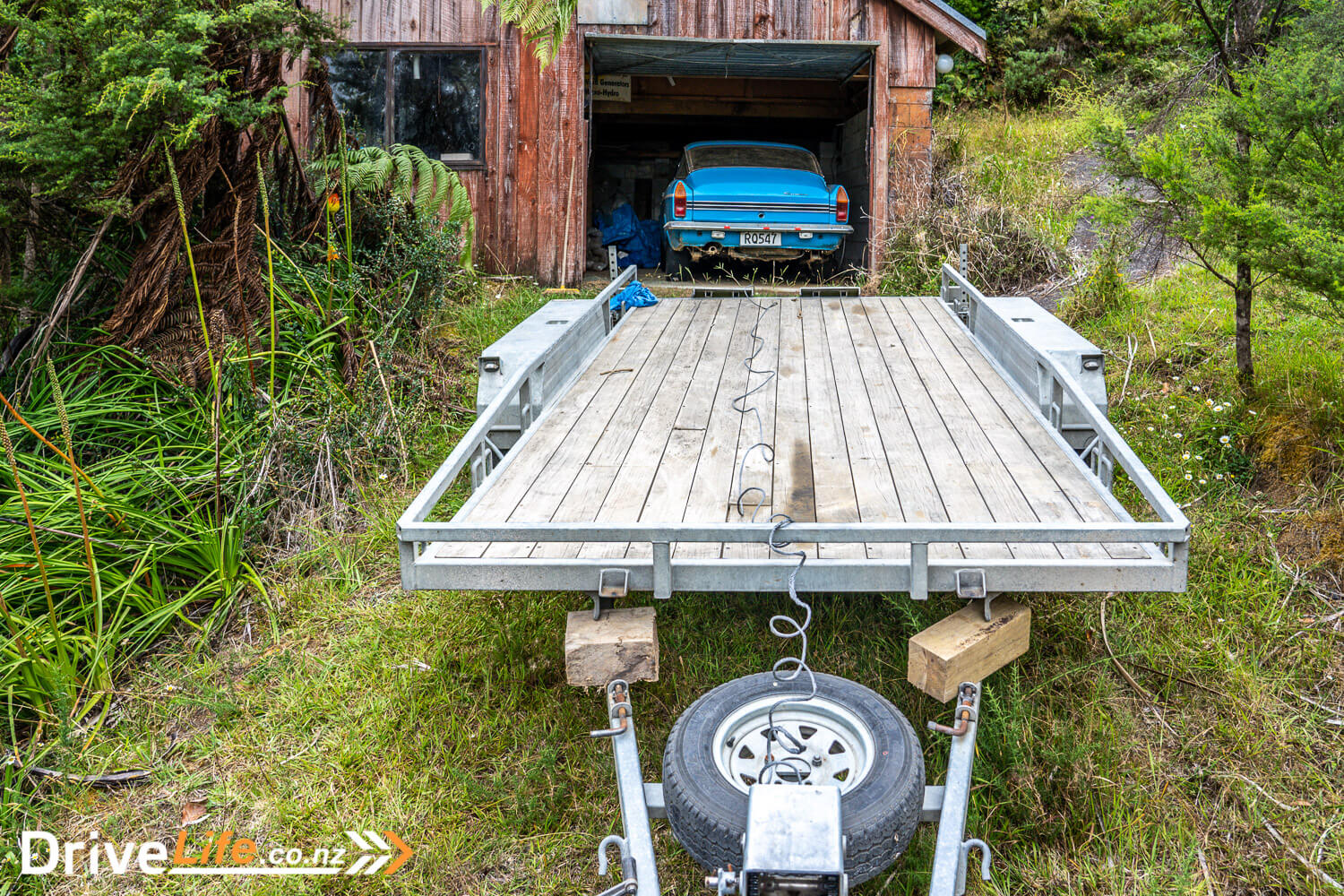
With almost Wellington-like wind where our drone struggled to stay in place, we worked for over an hour to get the car down safely onto the trailer. With lots of running around and shouting, we got it there and tied down within two hours. Time for a beer.
Two hour’s work in just over a minute.
Day 1 Driving Observation
It may be known as Land Of The Long White Cloud, but today we renamed New Zealand to Land Of The Tall Orange Road Cone. We saw so many roadworks today on the drive from Auckland north, it bordered on ridiculous. Some of these roadworks have been there for so many years, like Puhoi. Will they ever finish that highway?
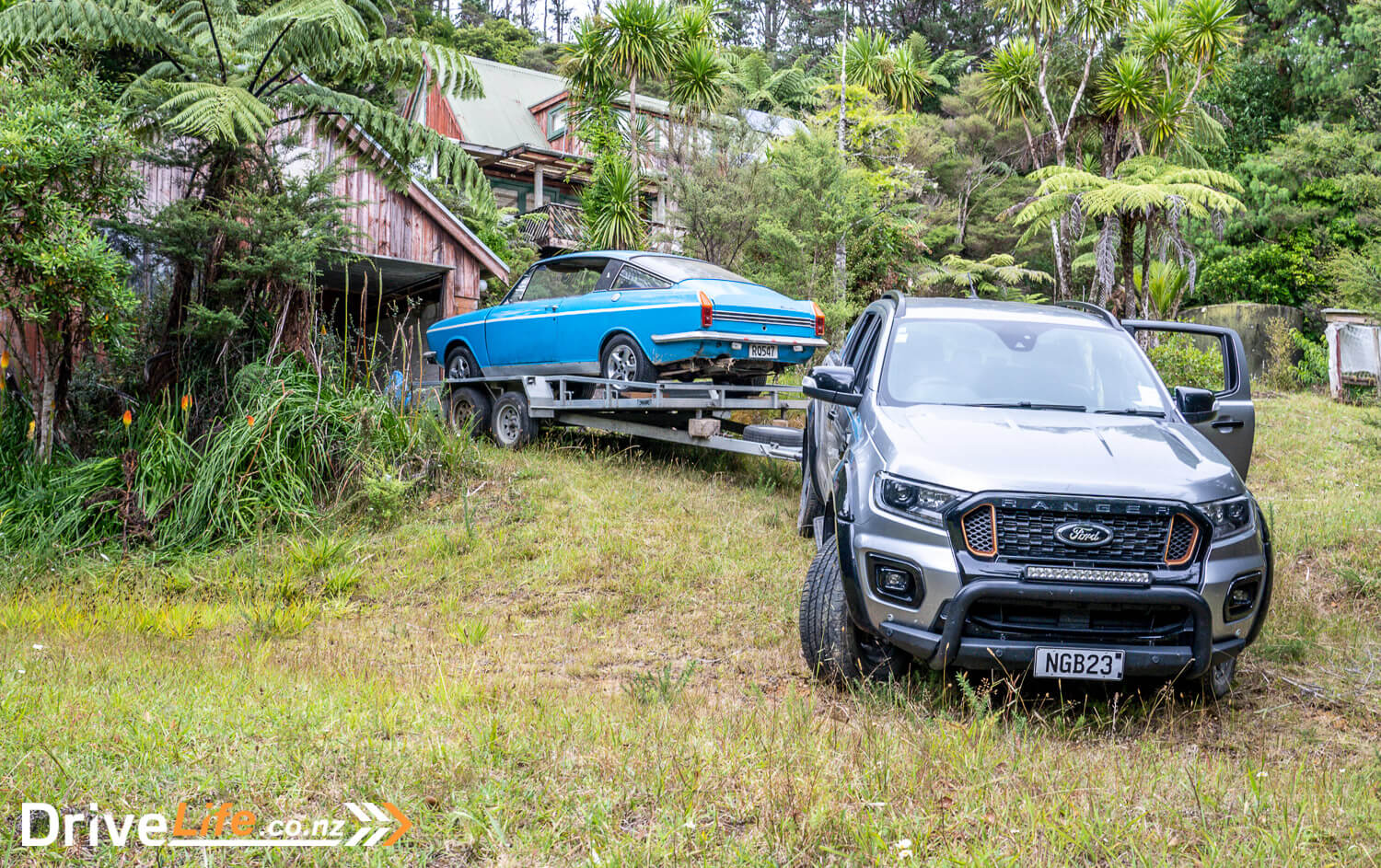
SATURDAY
There was talk of rain today and with road tyres and an extra 1,200Kg on the trailer, I wanted us to be out of there. We got away at 8am, getting up the first steep hill, the Ranger doing it easily. I could feel the extra weight, of that there was no doubt, but it still felt unstoppable. But this is just the beginning. We carried on, trying to ride the ridges so the trailer wouldn’t drag too much.
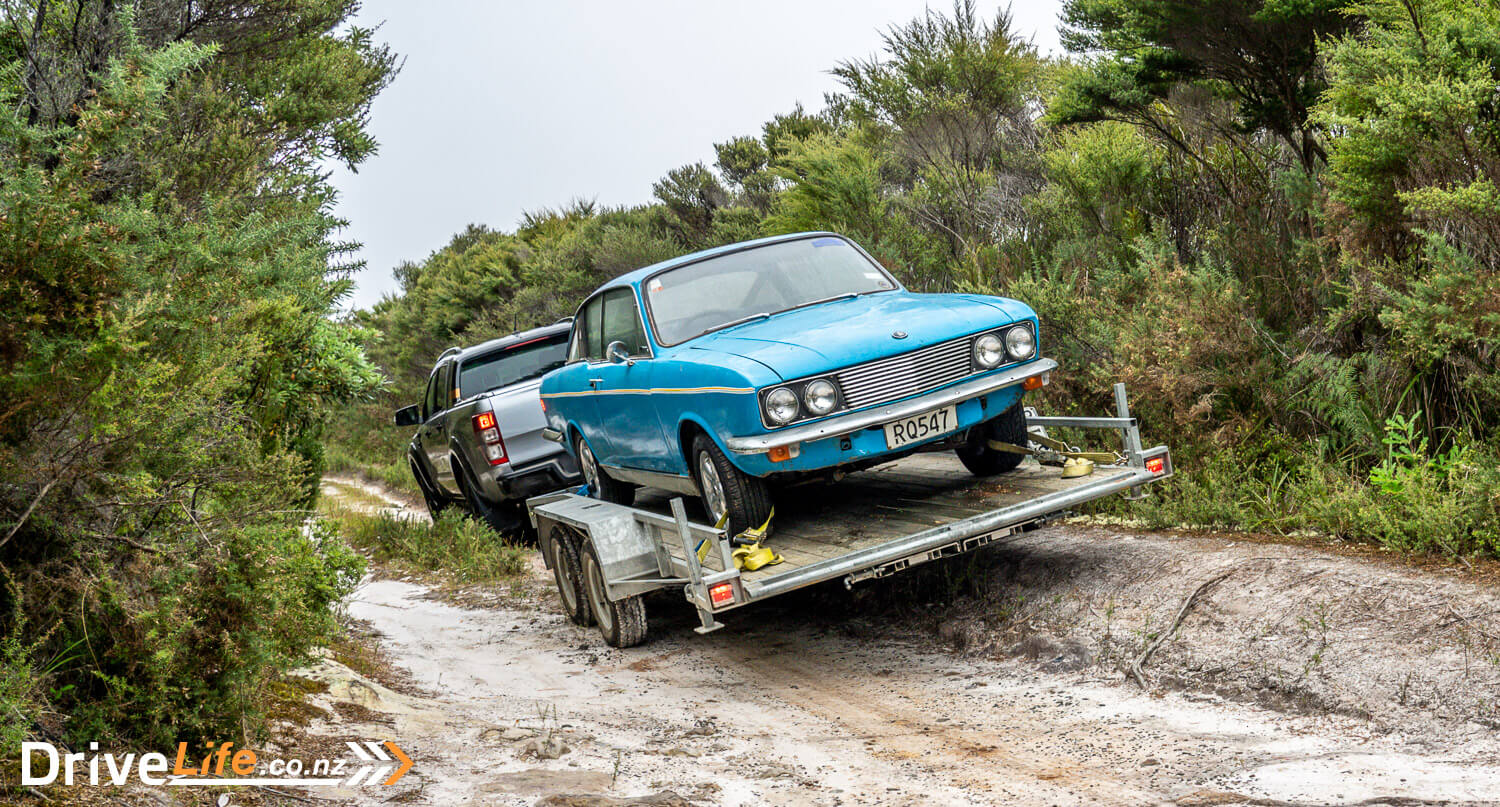
Keeping our momentum up was key, although we were still taking it easy. Then we got to the Big Hill. I stuck the Ranger into low range and put the diff lock on, then hit the Hill Descent Control button and let the car go. What was I worried about? The Ranger crawled down the hill, putting individual brakes on here and there and controlled our descent beautifully. It was too easy. We still have Jackknife Corner to get around, but the Big Hill was a big concern for me, and yet we cruised down it.
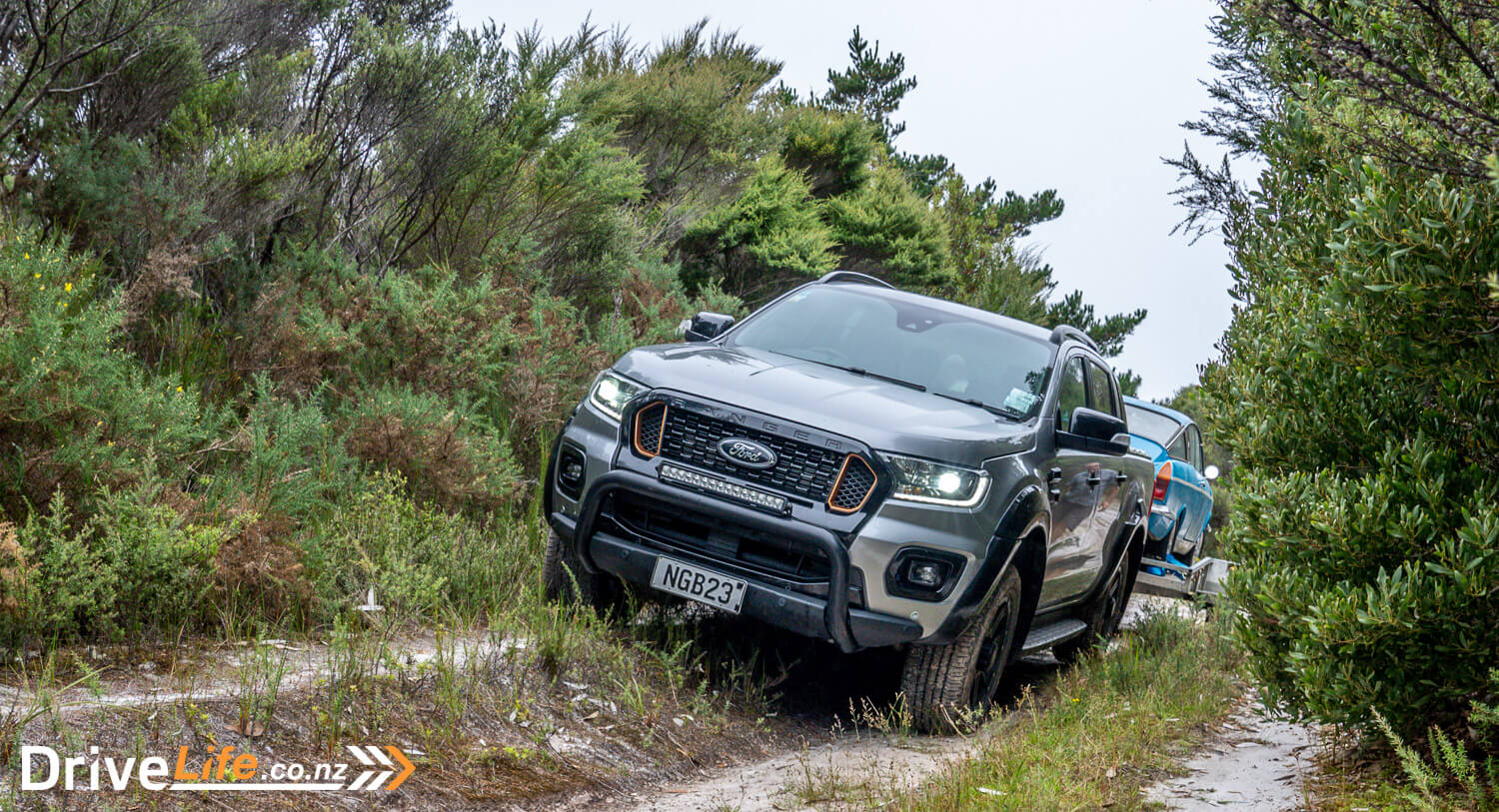
Too soon, we came to Jackknife Corner. It’s metal, on a sharp angle, turns and goes up a steep hill, and not that wide. I gave the Ranger a bit more gas and again, it cruised around the corner and up the hill. It could rain now and we wouldn’t care.
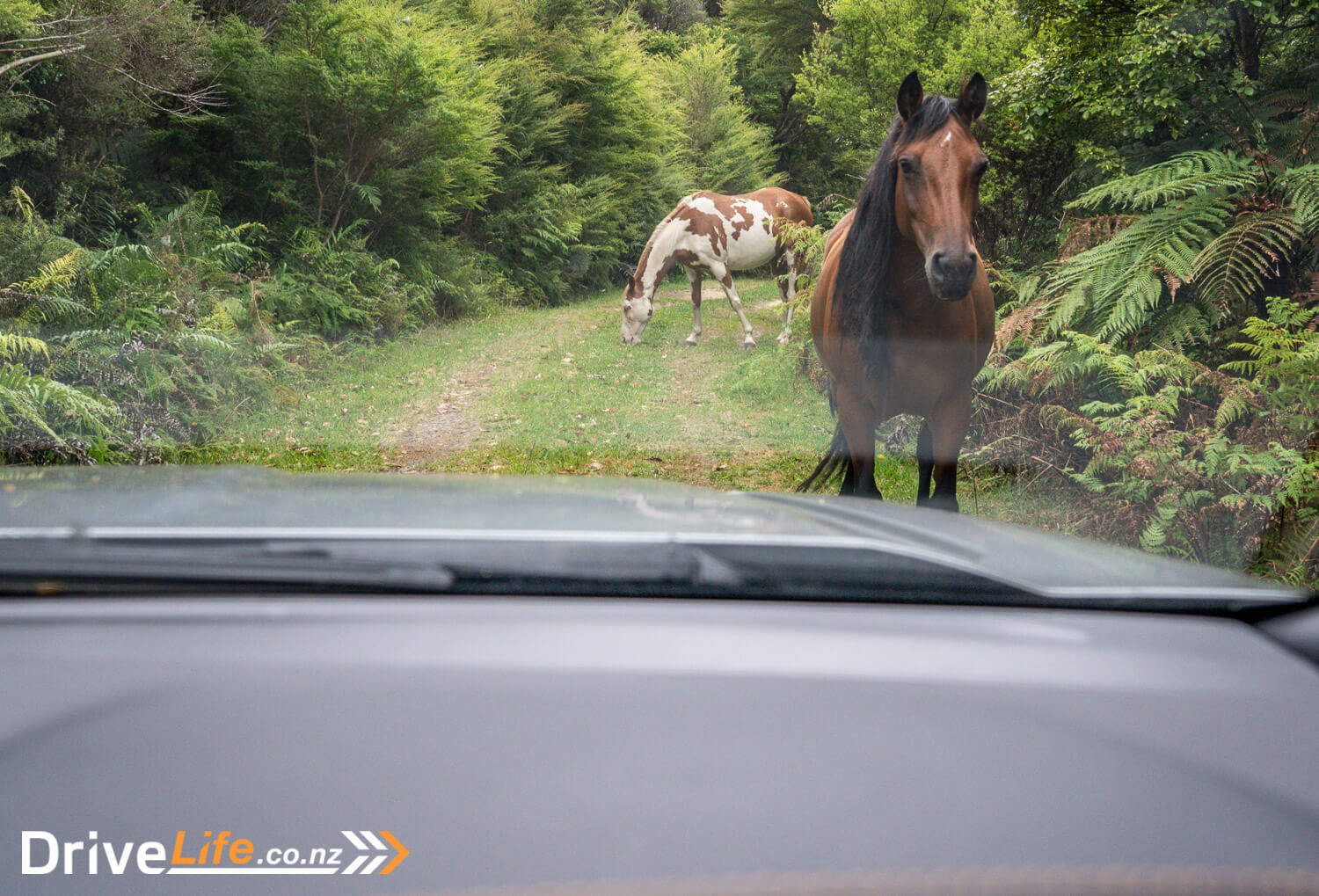
Our 40-minute drive to Kaitaia took an hour, but we had made it. The first port of call in Kaitaia was to get some diesel, at $1.95/litre (!). With the car on the trailer and the offroading in Ahipara, our fuel consumption was now sitting at 11.6L/100Km, pretty good considering where we had been.
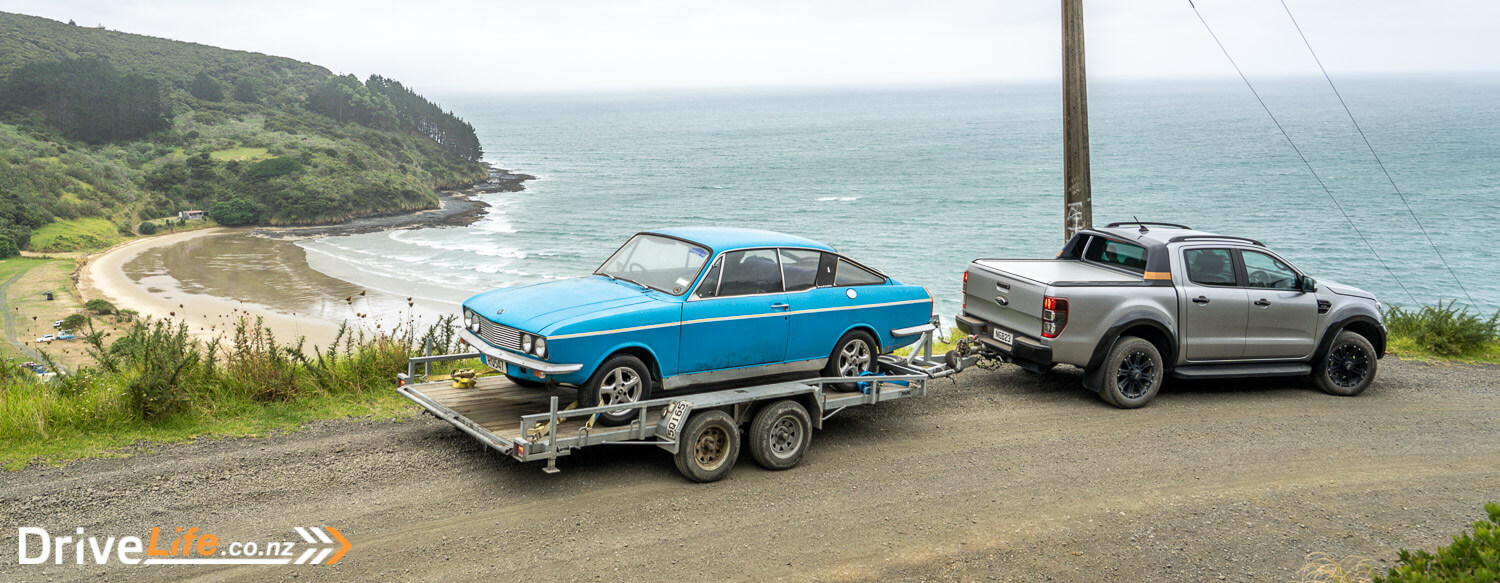
Time to get back to Tutukaka and rip out the motor and gearbox. I didn’t need these since we are converting the car to a V8, but our helper did. It seemed perfect to get them out of the car at this early stage so we wouldn’t be dragging the extra weight all the way to Hawera, 600Km away. The trip back to Tutukaka showed that the Ranger wasn’t really trying that much harder to haul an extra 1,200Kg on the trailer. Yes, performance was down some but we still had plenty of power in reserve, and that torquey engine made it relatively effortless.

But we were still under some time pressure. We needed to make it as far south as we could tonight, to reduce the drive to Hawera tomorrow, allowing us more time to start stripping the car for the engine conversion. We got to Tutukaka at 11:30, grabbed lunch, and then got stuck into removing the engine and gearbox. I’d allowed 3 hours for this which would get us on the road by 3pm. Did we work our asses off? Yes, we did. It seemed easiest to push the car off the trailer and into the garage to do the work. We removed the engine, gearbox, radiator and driveshaft in 3 hours 11 minutes, and then pushed the Fastback back onto the trailer, stropped her down and got on the road.
On the way to Auckland, I booked accommodation in Te Kuiti, aiming to get there at 9pm and allow us time to sleep before the next drive and more car stripping.
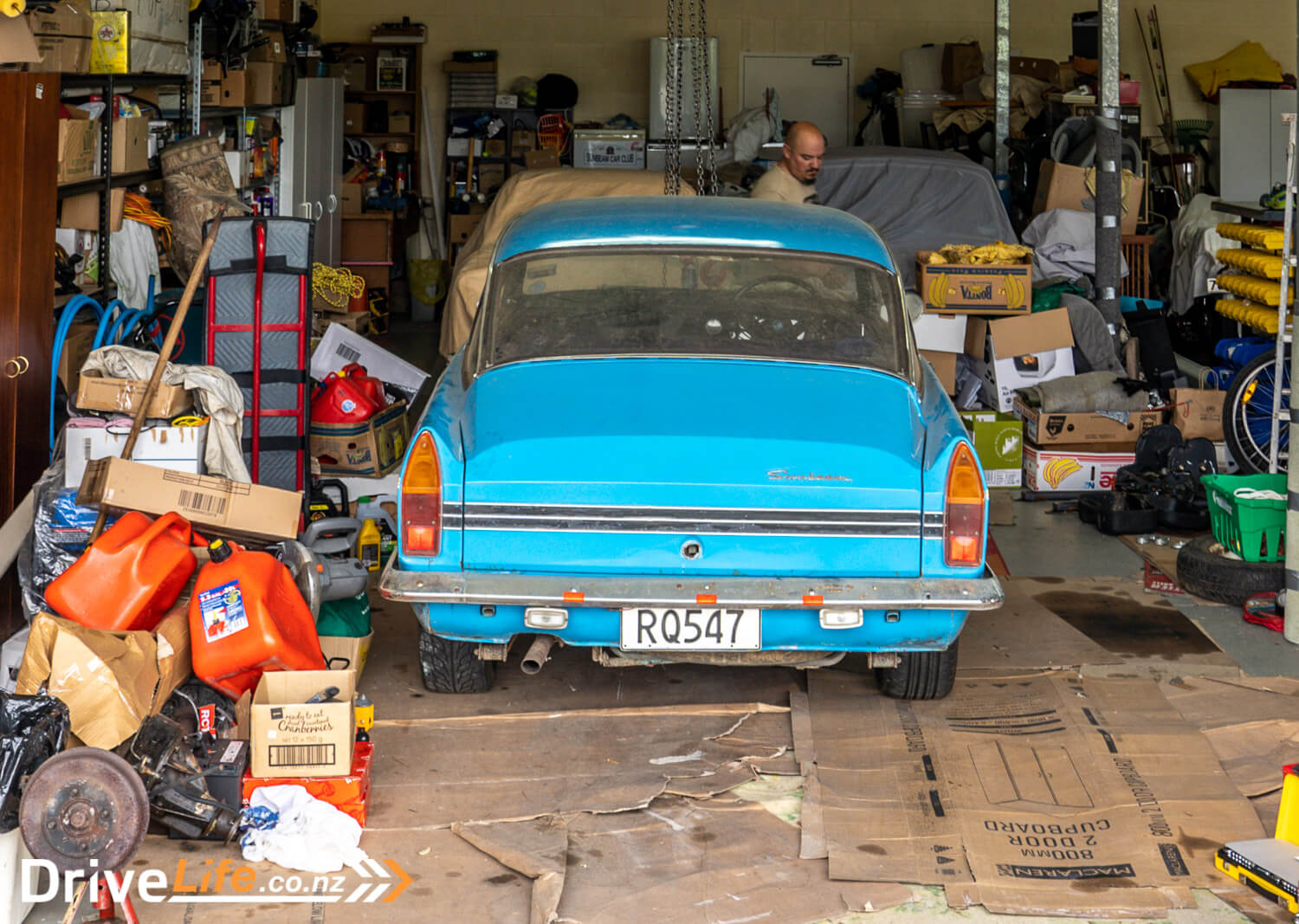
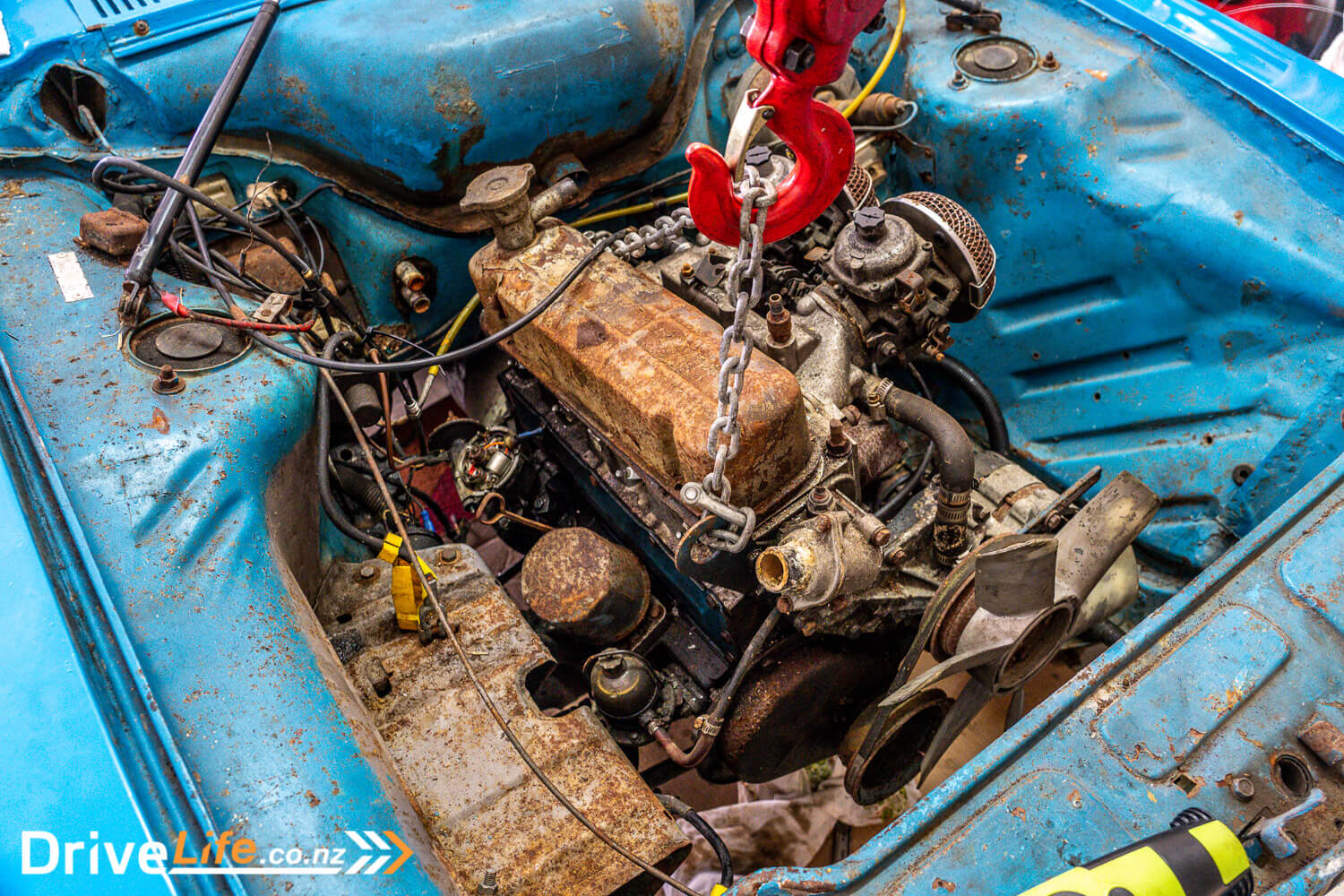
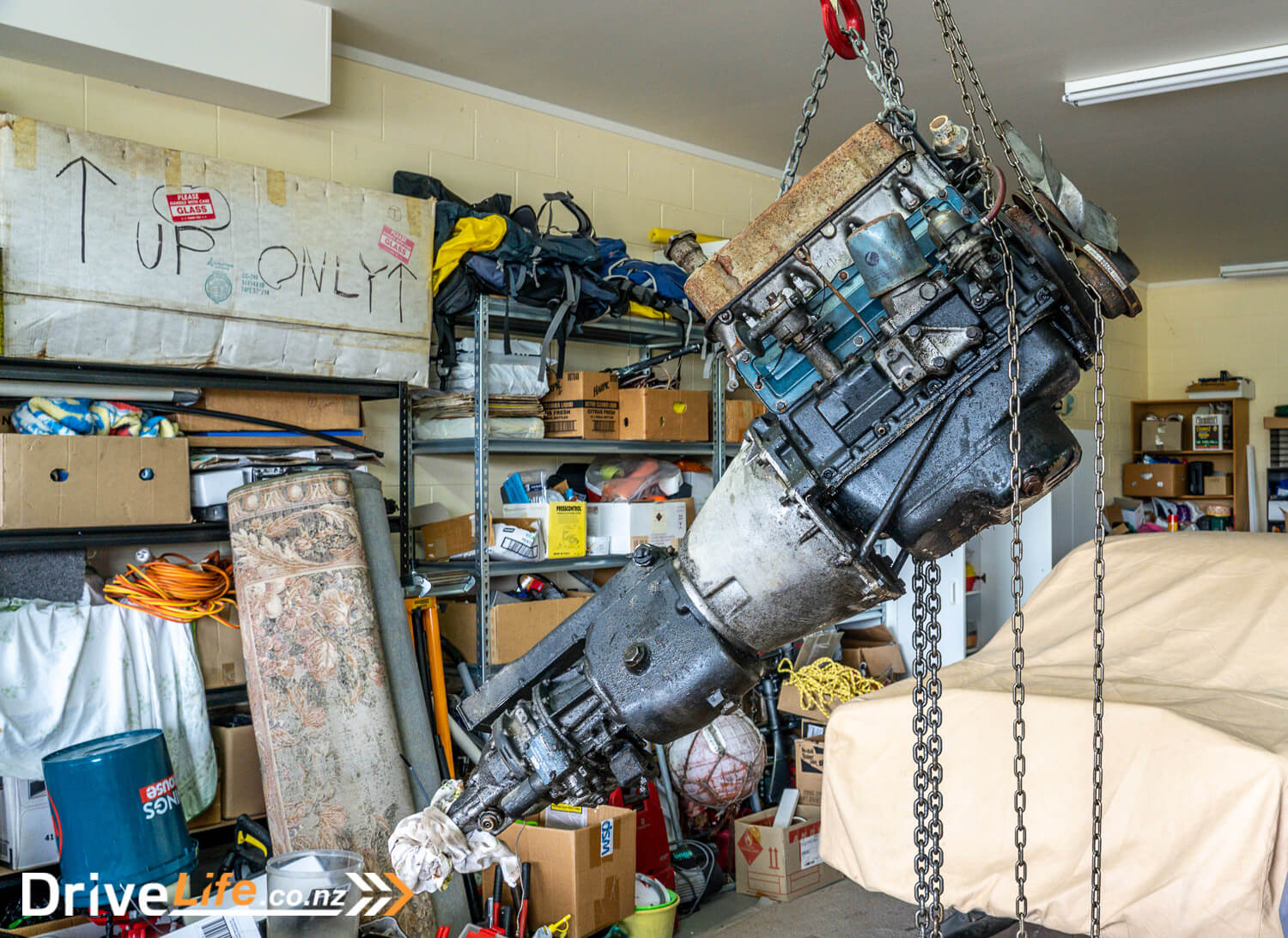
Day 2 Driving Observation
What is it with New Zealand drivers’ obsession with failing to keep left? We saw countless cars sitting in the right-hand lane on the motorway and well, everywhere, while we passed them at 90km/h in the left lane. What happened to the first rule of the road?
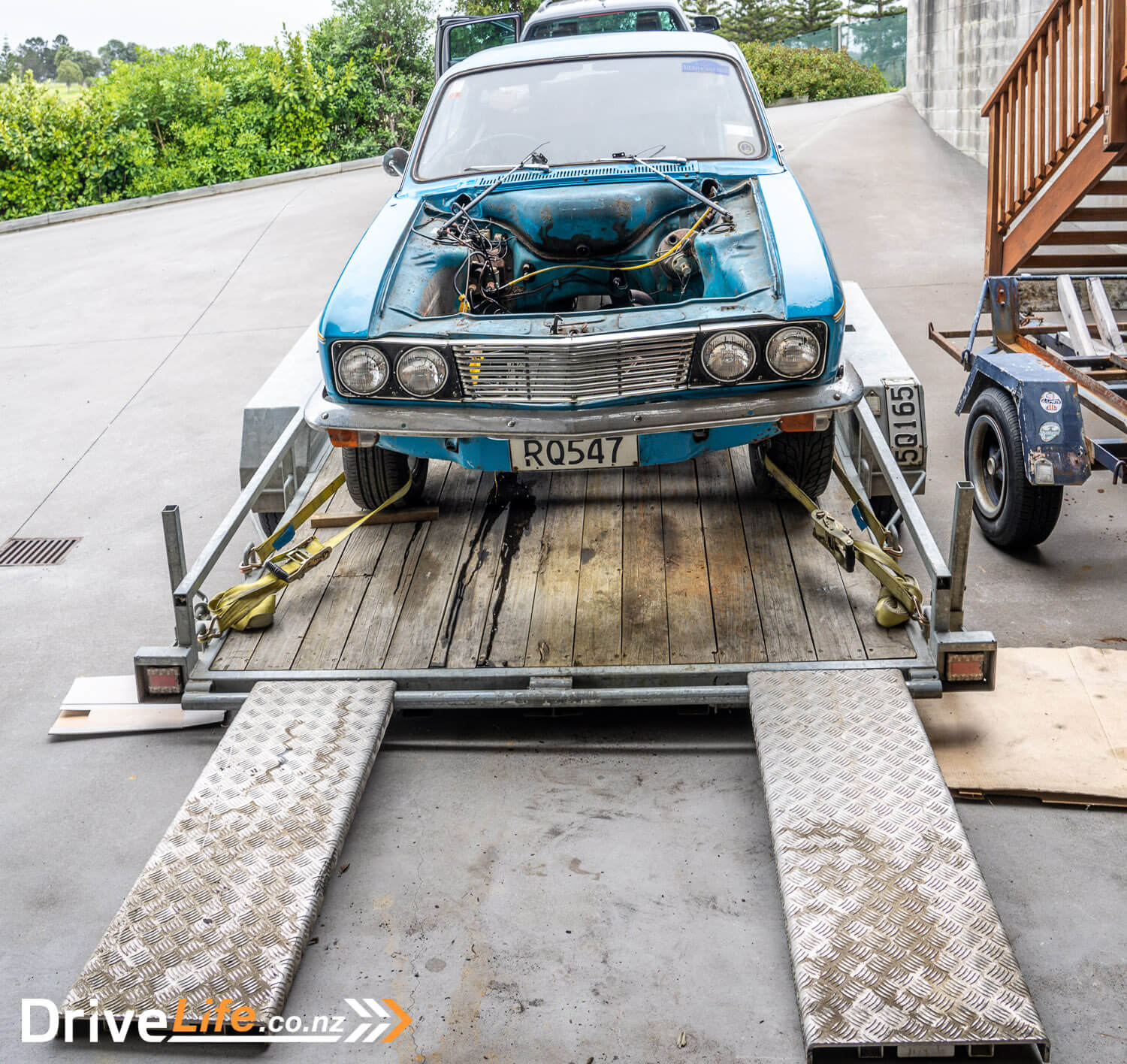
SUNDAY
We hit the road at 8am today from Te Kuiti, keen to get to Hawera as soon as possible to start working on the Fastback. Gassing up at BP in Te Kuiti was a bit cheaper than Kaitaia, at $1.79/litre. It still hurt to fill up the Ranger but surprisingly even with the trailer, the extra weight and drag, this would be our last fill-up.
Then, it poured down, and the rain didn’t let up until much later in the afternoon. Still, we got to my friend Lance’s workshop in Hawera at 11am, and immediately took the car to another workshop with a hoist to take some more measurements and to poke around under the car and see how much rot there was in the floorpan and sills.
Honestly, the rust wasn’t as bad as it could have been for a car sitting around for 20 years. Sure, there’s some that need to be fixed in the rear quarters, but this is a classic spot for a Rapier Fastback to rust (or honestly, any British car). One thing yet to do is remove the sill covers, as this is another classic place for rust to build up. We’ll leave that for tomorrow. The inner sills look ok for under the car, but removing the sill covers is going to be more revealing to see what the outer sills are like.
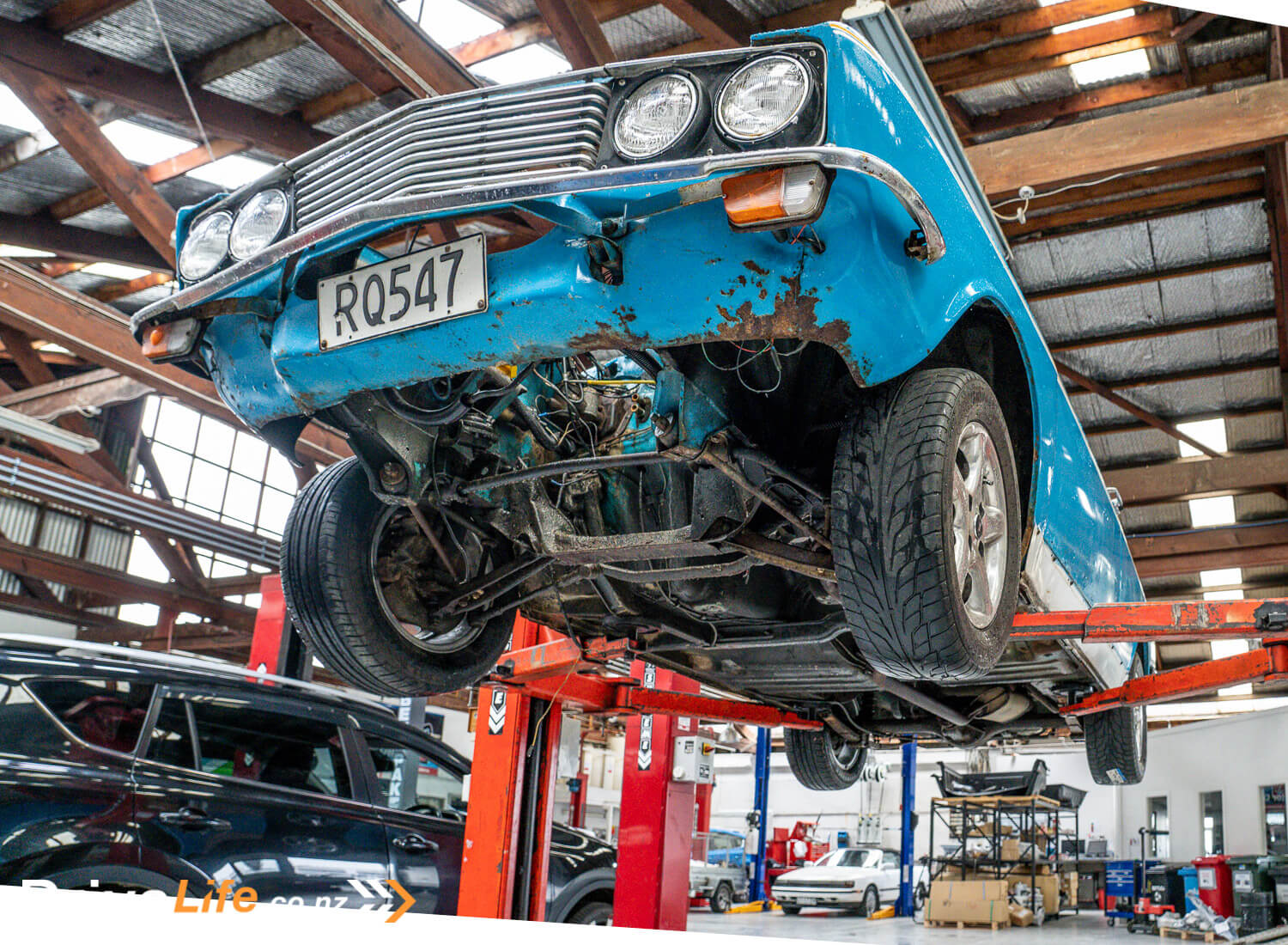
Then it was on to doing some measurements in the engine bay and noting them down. We headed back to Lance’s workshop to tear down more of the car. This meant removing the diff completely, as well as all the front suspension, brakes, steering, anti-roll bar and crossmember. That’s just one sentence, but it took around 5 hours with three of us on the job. There were lots of bolts that were not keen on moving, after sitting for 20 years.
That done, we bolted our (borrowed) bare Rover V8 block to the gearbox, and tomorrow will do a trial fit of these in the car. We know there’s going to be some mods to get it in properly, but at least sitting the block and gearbox in place, we can check measurements as well as clearances from the bell housing to the firewall, for example. We can use this dummy setup to do our drawings for our LVVTA Certifier to approve, or advise of changes.
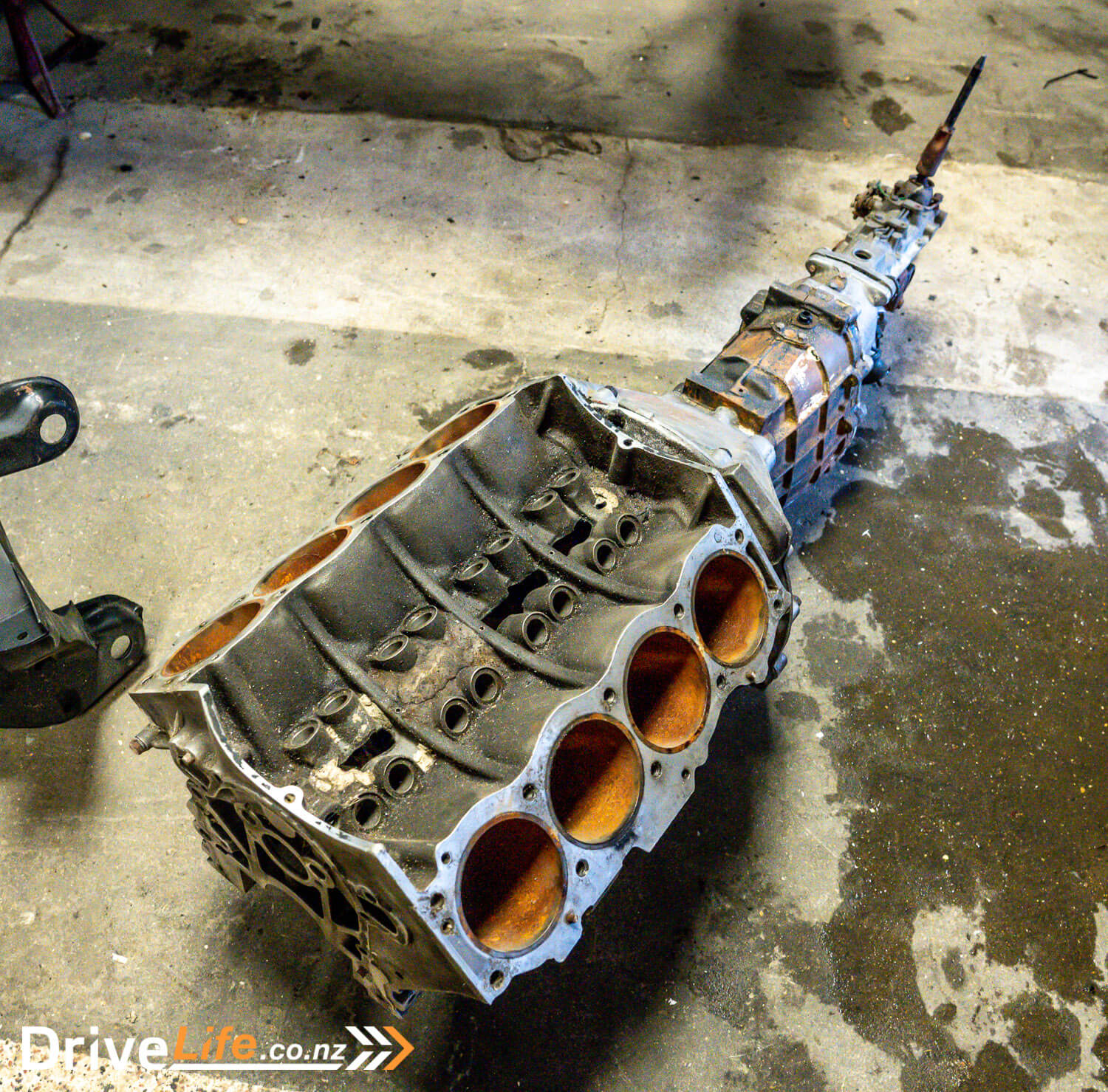
But before we do that, we need to spend the morning ripping out all the hydraulic lines from the engine bay and also the wiring loom, and remove the headlights, grille, and front bumper. The reason for this is that before I got the car, it had a shunt and was repaired under insurance. But the repair that was done is far from acceptable. In the next few weeks, a panel beater will come and assess the repair and see what we need to do to make the car legal and safe again. This will likely mean putting the Fastback on a chassis straightening machine, at the very least. I had forgotten all about the crash/repair until we looked under the bonnet yesterday while removing the engine and gearbox.
Also in the morning, we’ll take more measurements with the block and gearbox trial-fitted, and gather data for our drawings to send to the LVVTA Certifier. While the front of the car does need to be fixed after that bad repair job, that doesn’t stop us going ahead with getting permission from our LVVTA Certifier to carry on with our modifications and engine conversion.
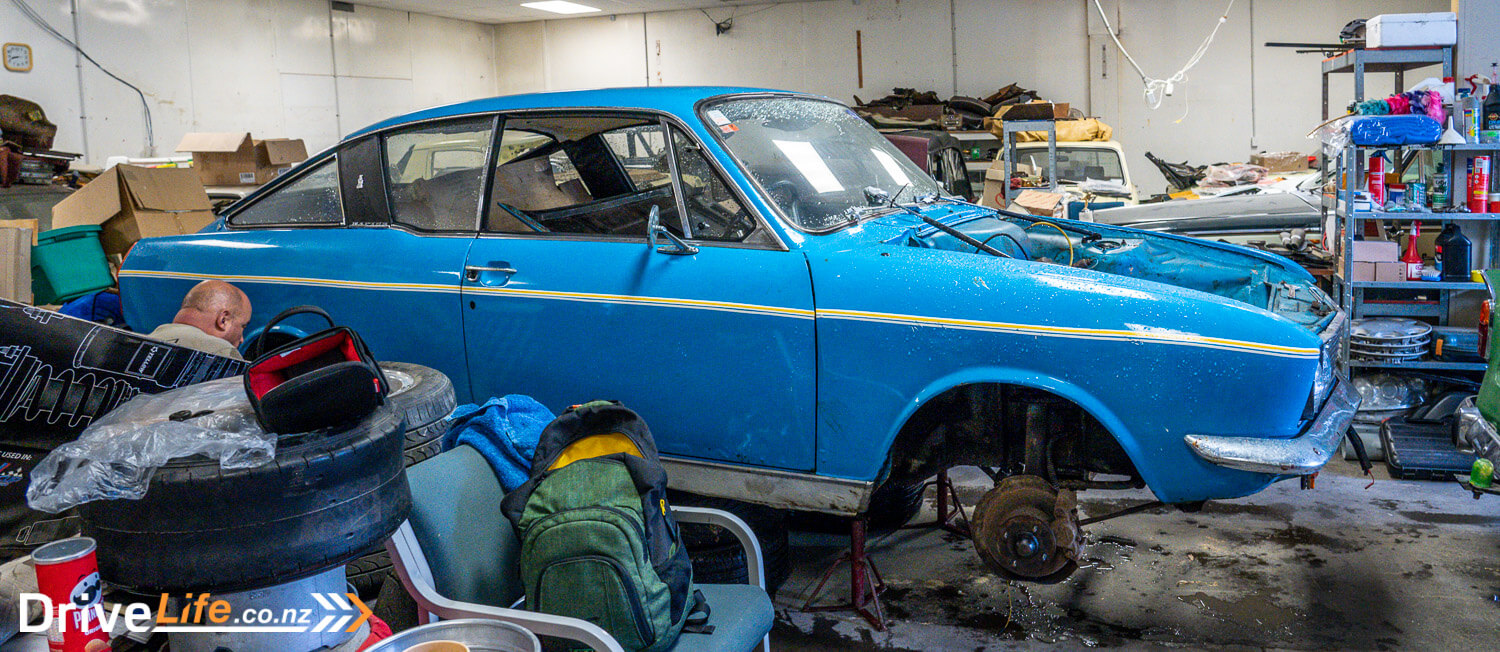
Day 3 Driving Observation
In the pouring rain, more drivers didn’t have their headlights on than did. Why are New Zealand drivers not putting their headlights on in the rain, to be seen? Unfortunately, a lot of the cars we saw with no headlights on were grey, silver or black, making it even more dangerous. Why don’t New Zealand drivers want to be visible in bad driving conditions? And that’s not to mention the ones driving with their parking lights on, thinking it was helping. Still, as long as they aren’t speeding, right?
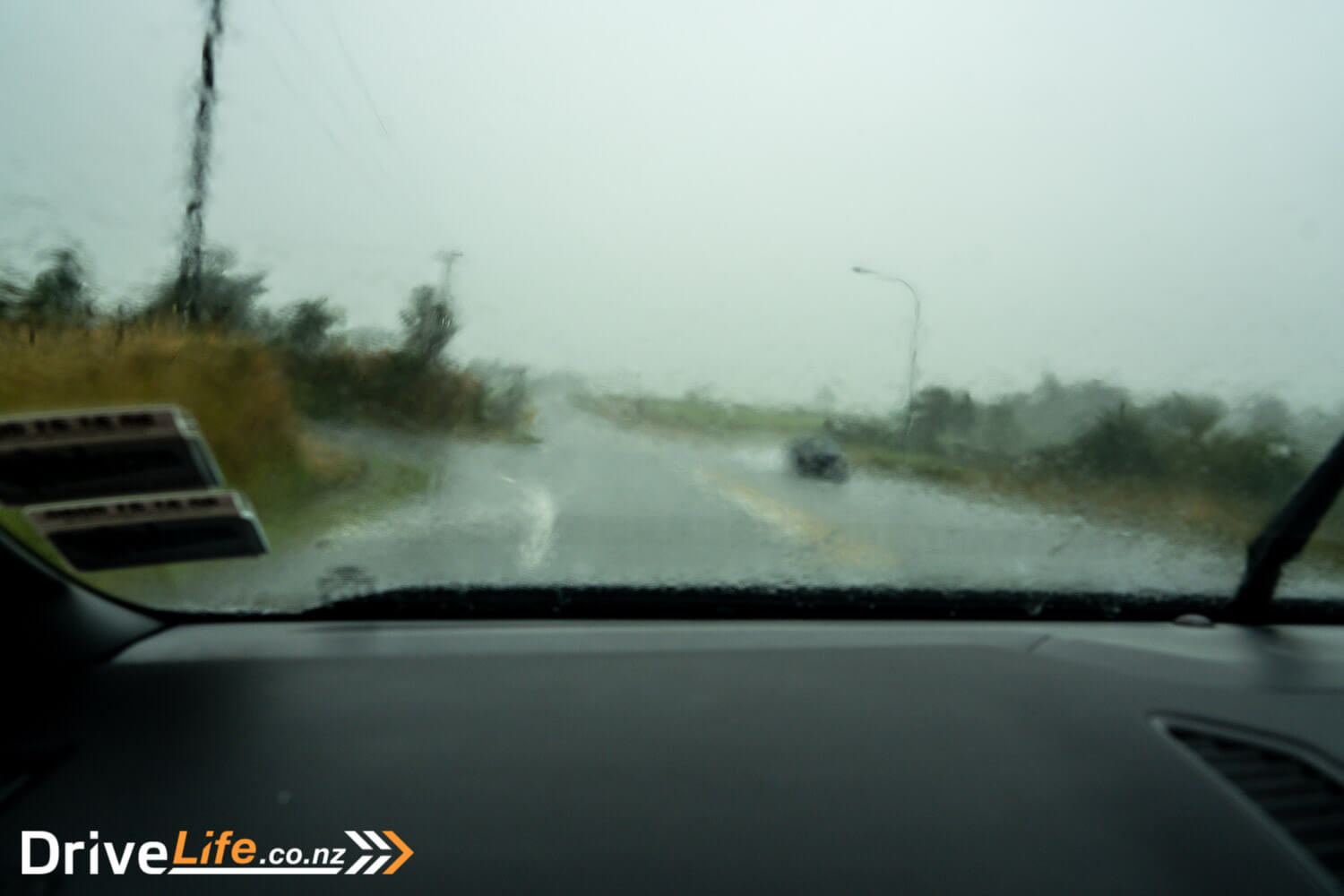
MONDAY
Kicking off at 9am, we got into stripping the engine bay and front of the car. We’d also need to remove the parcel shelf, as the standard parcel shelf would interfere with the installation of our electric power steering motor.
Another item to be removed would be the heater. While the car is in Hawera, it’s going to be retrofitted with air conditioning. Yes, I want aircon. I’m over terrible British heaters that couldn’t demist a windscreen if their life depended on it. We’ll have the engine power to run an AC compressor, and while the car is apart it’s going to make it a lot easier to get it installed. We’ll be covering that part of the project when its turn comes.
The morning went pretty well with scraped knuckles and greasy overalls getting even more greasy. But within two hours, we had everything stripped off that we wanted to. Well, except for those sill covers. Drill in hand, we removed the pop rivets holding them on and held breath. Rust, lots of rust. Yes, they could have been a lot worse, but there’s some work to be done here before the car will get a WoF, that’s for sure. They may not be salvageable yet, but we’re getting a panel beater in to take a look in the next few weeks and make some judgement calls on the chassis damage and viability of repair, and also whatever else would need to be done to get a WoF.
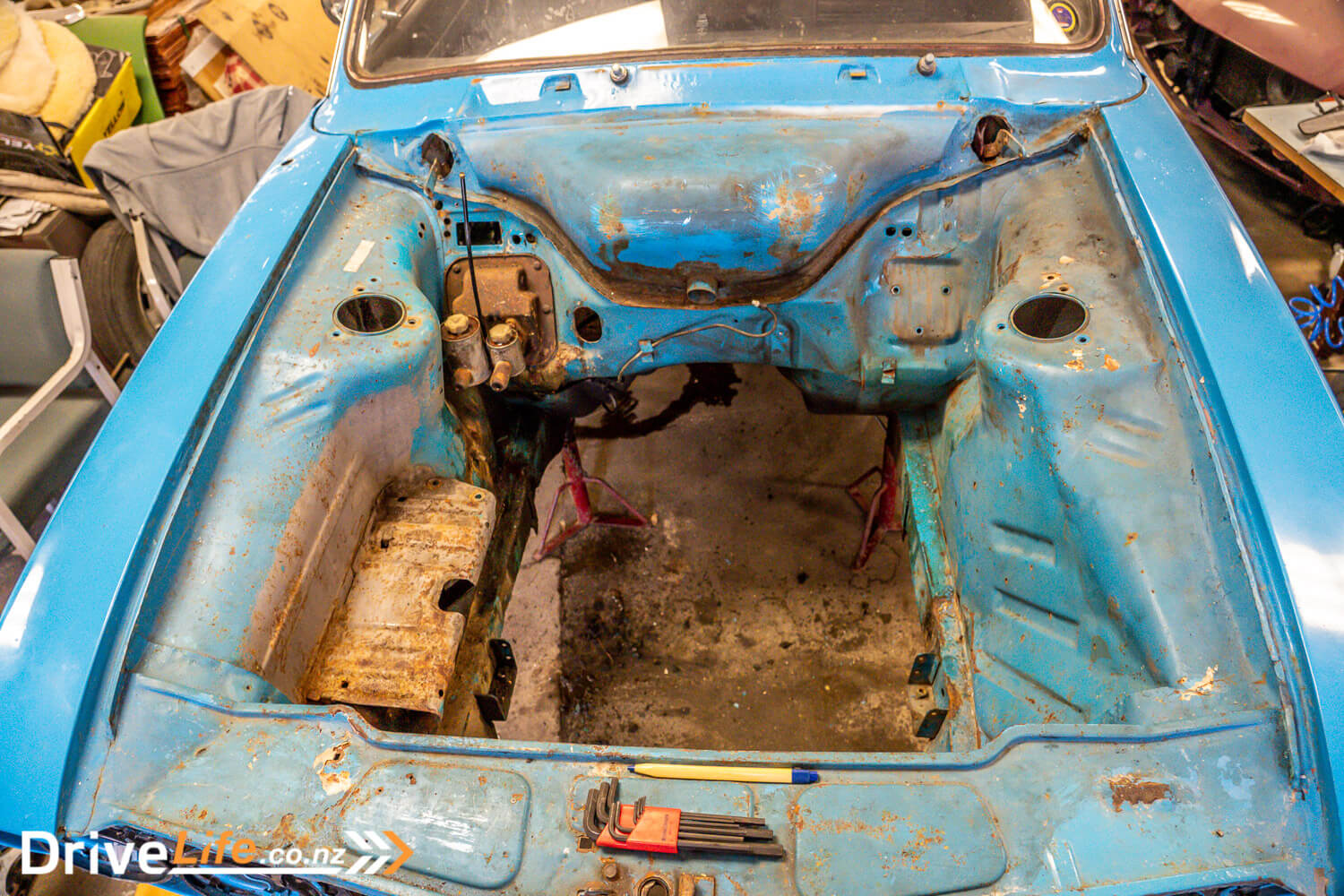
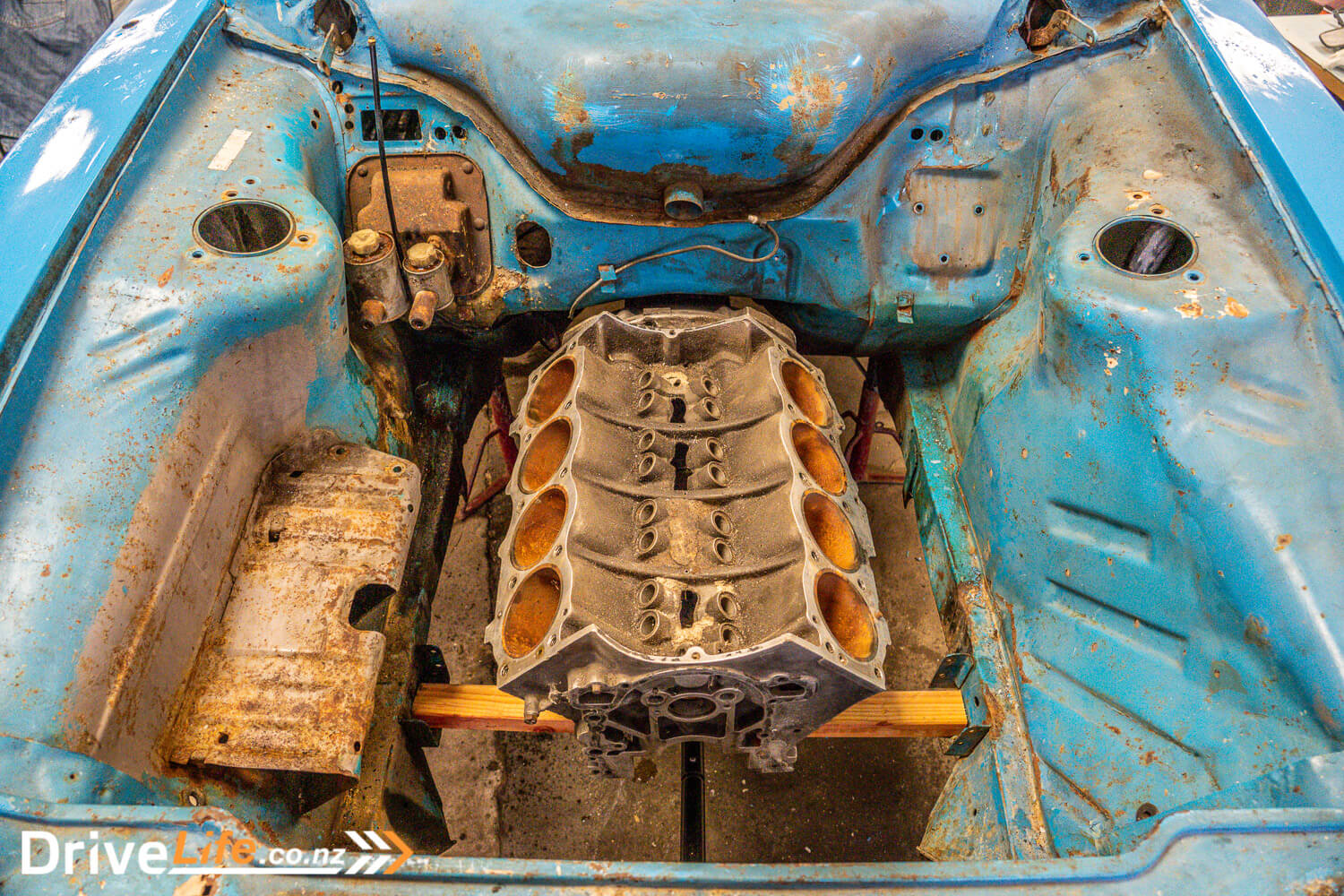
Just to remind you of the process, we’re getting the Rover V8 motor and 5-speed gearbox installed, along with a Hilux diff, rear disc brake conversion, new front struts and bigger front brakes. Also going into the mix is Corolla electric power steering. Once those items are in, we’ll hopefully get our LVVTA certification and then get a WoF, all going well. After the car is legal to drive on the road, we can work on it to move it towards a full body restoration and mods, as well as an all-new interior. Naturally, our LVVTA Certifier will be checking our drawings before we start any changes, and we’ll make sure we have his approval at every step, where it’s required.
As icing on the cake before we hit the road home, we jacked up the bare Rover V8 block with the gearbox attached, slid it under the car, and then into approximate position. A piece of wood played the part of engine mounts, just so we could see how it’s going to look in the car. There’s a bit of a problem with the gear selector; the Rover one is far too long, and the shifter would be back between the front seats. Lance suggests a Jaguar one is about half the length, and he has one somewhere in his parts department. We’ll revisit that another day.
The engine, with the water pump attached, is quite long. We’ll be moving to a Davies-Craig electric water pump, but we’ll still need to have the existing one in place, and the drive belts for the alternator and AC compressor. But there’s enough room, especially if we dump the pulley fan and go with two electric fans instead. Also, we’ll probably move the radiator from where it was, to directly behind the grille. That way we’ll gain some length in the engine bay and we can have a much bigger radiator for our V8.
Everything else looks ok. While our bare block has no heads, there’s more than enough room in the engine bay. We may need to modify the heater pipes, adding a 90-degree angle to them so they don’t hit the heads. We’re still not sure if the brake booster will foul anything, but we can always relocate that. The battery mount is still unknown as it may foul the engine, but worst case scenario we reroute it to the boot.
For the moment, that’s it. We’re organising getting the Fastback axles welded to the Hilux diff, waiting on our aircon man to take a look, as well as the panel beater. We’ll also start working on our design drawings for our LVVTA Certifier so once we have a plan, we can move forward with it.
With that, we hit the road and dropped the trailer to the Palmerston North branch of Cross Country Rentals, and then drove home. Over 1,600Km, the Ranger averaged 11.5L/100km of diesel. For the almost constant weight and drag of the trailer plus the weight of the Fastback when it was on there, 11.5 is a great result.
And what about the Ford Ranger Wildtrak X? For a while there, I was lusting after a Silverado or a Ram to do this trip with, but I’m very happy we had the Ranger; it’s just the right size for this trip, especially when you consider where we took it offroad. Over the whole trip, neither of us had any discomfort from those excellent seats, the engine is very smooth and surprisingly quiet, and that 10-speed automatic transmission is a perfect match for the engine. My thoughts of the gearbox hunting up and down while towing were unnecessary; the motor gets very low in the rev range to make the most of the torque before it changes down. If I was going to do this trip again, I wouldn’t hesitate to take a Ranger, and especially the Wildtrak X – it suited our long drive to perfection. Thanks to Ford New Zealand for the loan of a tow car.
Day 4 Driving Observation
Unbelievably, today we actually saw people using passing lanes correctly. They would indicate a lane change and move to the right, pass a car, and then indicate and move to the left lane again. So it is possible, and not all New Zealand drivers are terrible. We live in hope.
Join our mailing list so you don’t miss another article in this series.
Read PART 1 of this series here
Read PART 2 of this series here
Read PART 4 of this series here


